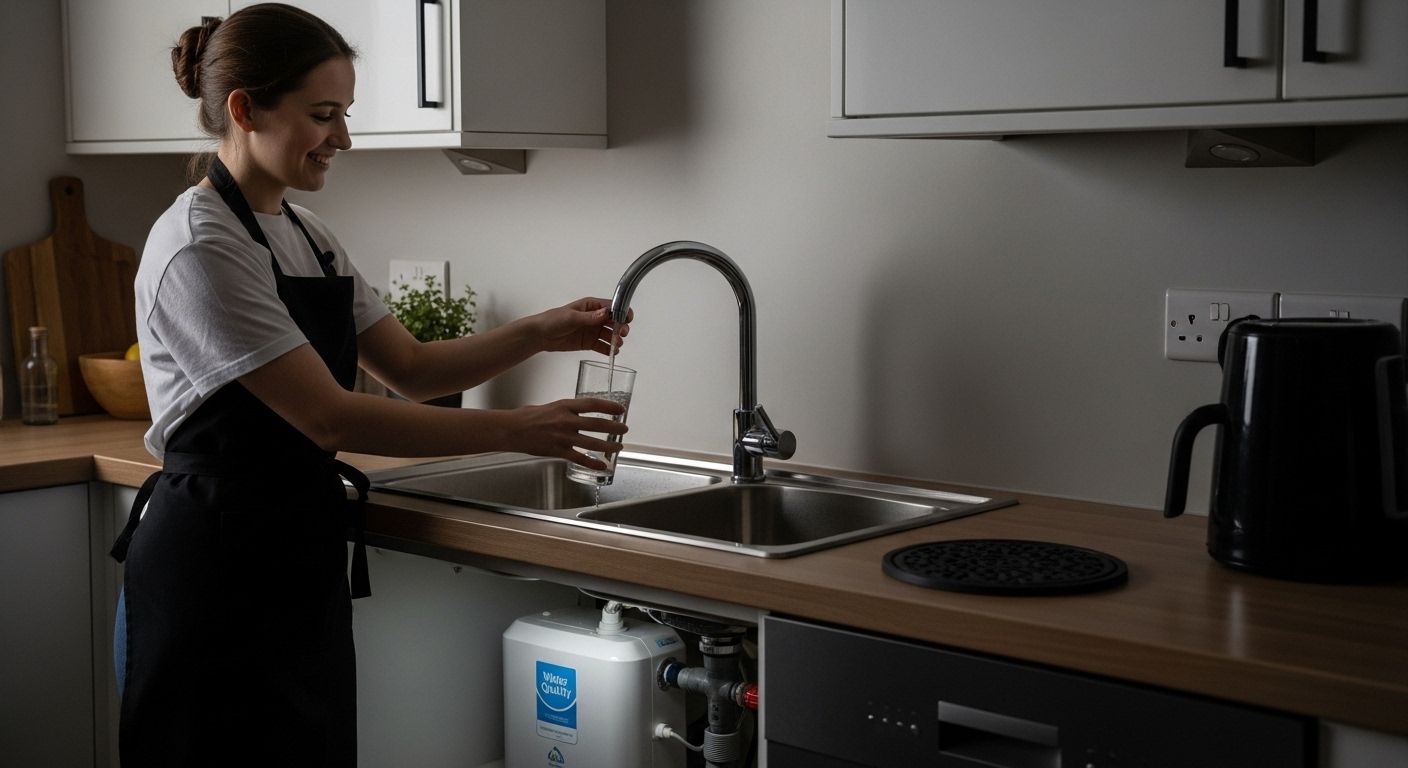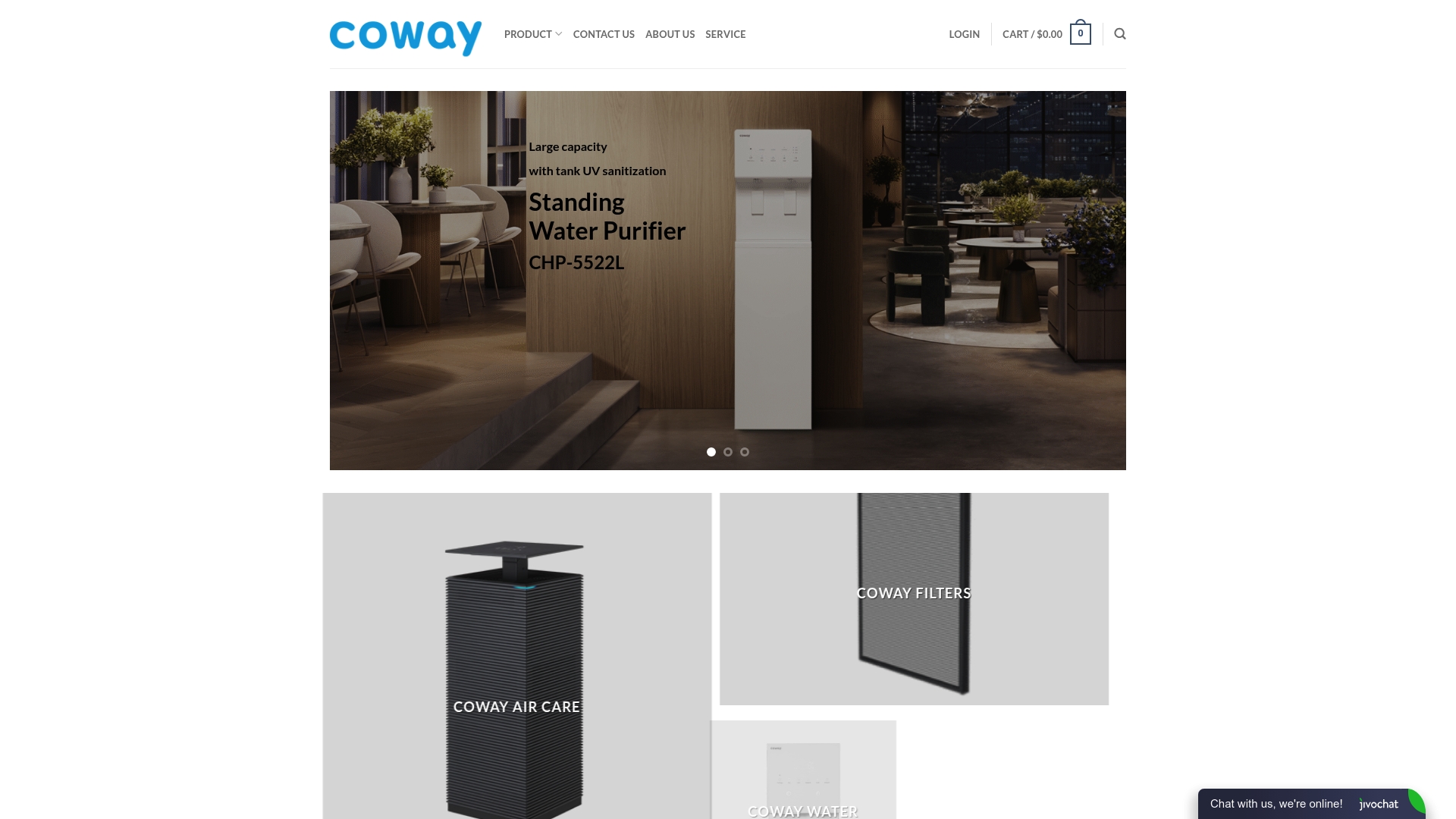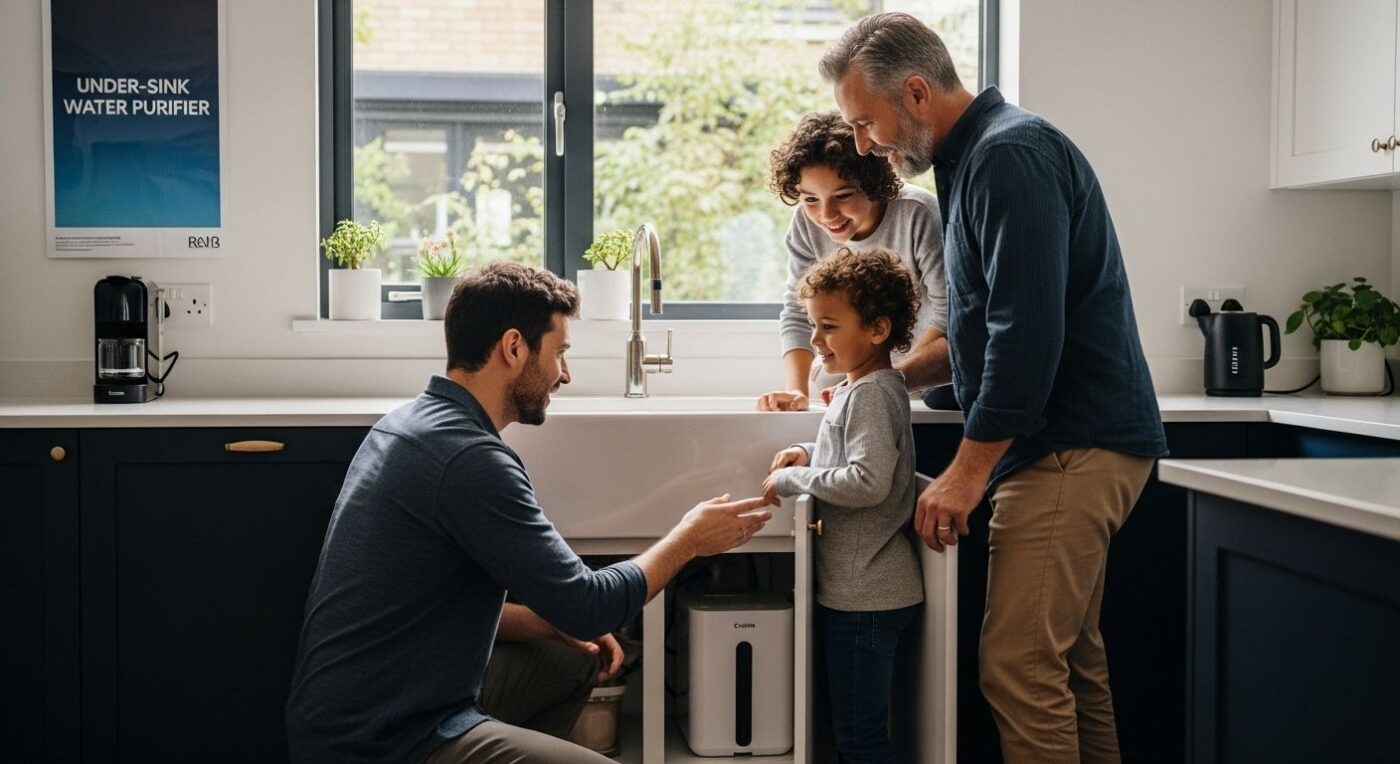Uncategorized
What is Under-Sink Water Purifier? Understanding Its Importance
Under-sink water purifiers quietly work beneath your kitchen counter, promising to deliver clean water right from a dedicated faucet. Most people think a basic filter or a pitcher is enough for safe hydration, but studies show these hidden systems can wipe out up to 99 percent of dissolved solids, bacteria, and chemical impurities in your drinking water. The real surprise is not just the convenience, but the advanced science packed into such a small space—turning what seems like a simple tap into your home’s best health upgrade.
Table of Contents
- Understanding The Basics Of Under-Sink Water Purifiers
- The Importance Of Clean Drinking Water
- How Under-Sink Water Purifiers Work
- Key Technologies Behind Under-Sink Water Purification
- Real-World Applications And Benefits
Quick Summary
| Takeaway | Explanation |
|---|---|
| Under-sink purifiers offer comprehensive filtration. | They utilize multiple stages, including sediment filters, activated carbon, and reverse osmosis to purify water at home. |
| Installation is space-efficient and user-friendly. | These systems fit under most sinks, requiring minimal modifications while providing immediate access to purified water. |
| Clean water impacts health and wellness. | Ensuring access to uncontaminated water reduces disease risk and supports essential bodily functions. |
| Advanced technologies ensure high purity. | Techniques like reverse osmosis and activated carbon enhance contamination removal, meeting stringent water quality standards. |
| Suitable for residential and commercial uses. | Under-sink purifiers protect public health in homes, businesses, and healthcare facilities by ensuring safe drinking water. |
Understanding the Basics of Under-Sink Water Purifiers
An under-sink water purifier represents a sophisticated home water treatment system designed to deliver clean, safe drinking water directly from a dedicated faucet installed beneath your kitchen sink. Unlike countertop or pitcher filters, these systems operate as comprehensive water treatment solutions integrated seamlessly into your home’s water infrastructure.
Core Components and Filtration Technology
Under-sink water purifiers typically consist of multiple filtration stages that work together to remove contaminants effectively. According to the Centers for Disease Control and Prevention, these point-of-use systems can target specific water quality issues with remarkable precision.
The standard under-sink water purifier includes several key components:
- Sediment Pre-Filter: Captures larger particles like sand, rust, and debris
- Carbon Activated Filter: Removes chlorine, organic compounds, and improves taste
- Reverse Osmosis Membrane: Eliminates microscopic contaminants including dissolved solids
Installation and Functional Advantages
These water purification systems offer significant advantages over traditional filtration methods. They provide direct water treatment at the point of use, which means water is purified immediately before consumption.
To clarify how under-sink water purifiers work, the table below breaks down each core filtration stage and its primary function in ensuring water quality.
| Filtration Stage | Main Function |
|---|---|
| Sediment Pre-Filter | Captures larger particles like sand, rust, and debris |
| Activated Carbon Filter | Removes chlorine, organic compounds, and improves water taste |
| Reverse Osmosis Membrane | Eliminates microscopic contaminants including dissolved solids |
| Ultrafiltration Membrane* | Targets larger molecular contaminants for additional safety |
| Nanofiltration Technologies* | Provides selective separation of certain dissolved substances |
*Stages may be present in advanced or select models.
The compact design allows for installation in compact kitchen spaces without requiring extensive modifications.
Homeowners appreciate under-sink water purifiers for their comprehensive filtration, space efficiency, and consistent water quality. By treating water at the molecular level, these systems ensure that every drop from the dedicated faucet meets high purity standards. Check out our guide on water purification best practices to understand more about maintaining optimal water quality in your home.
The Importance of Clean Drinking Water
Clean drinking water represents a fundamental human necessity that directly impacts individual health, community wellness, and overall quality of life. Beyond simple hydration, water quality plays a critical role in preventing disease, supporting bodily functions, and maintaining long-term physiological health.
Health Risks of Contaminated Water
Contaminated water can introduce numerous serious health challenges. Research from the National Institutes of Health highlights that water-related contaminants can lead to significant medical complications. These potential risks include:
Below is a summary of the common contaminants found in drinking water and their associated health risks, as referenced in the article.
| Type of Contaminant | Example Sources | Health Risks |
|---|---|---|
| Microbial Pathogens | Bacteria, viruses, parasites | Gastrointestinal illnesses |
| Chemical Contaminants | Heavy metals, pesticides | Long-term health problems (neurological, cancer) |
| Biological Toxins | Algae, plant-based toxins | Compromised immune system, acute poisoning |
- Microbial Pathogens: Bacteria, viruses, and parasites causing gastrointestinal illnesses
- Chemical Contaminants: Heavy metals, pesticides, and industrial chemicals that may trigger long-term health problems
- Biological Toxins: Naturally occurring substances that can compromise immune system functioning
Water Quality and Human Physiology
Water serves as a critical medium for numerous biological processes. Proper hydration supports essential functions like nutrient transportation, temperature regulation, joint lubrication, and cellular metabolism. Consuming water free from harmful contaminants ensures these processes remain uninterrupted and efficient.
Moreover, water quality directly influences metabolic performance, cognitive function, and overall energy levels. Learn more about comprehensive water filtration techniques to understand how advanced purification systems protect your health. Clean water is not just a luxury but a fundamental requirement for maintaining optimal human physiological performance and preventing potential health risks associated with contaminated water sources.
How Under-Sink Water Purifiers Work
Under-sink water purifiers function through a sophisticated, multi-stage filtration process that transforms ordinary tap water into premium drinking water. These advanced systems employ cutting-edge technologies to systematically remove contaminants, ensuring water quality and safety through precise, sequential treatment stages.
Comprehensive Filtration Mechanism
The filtration process in under-sink water purifiers operates through intricate, interconnected stages designed to progressively eliminate different types of impurities. Each stage targets specific contaminants with remarkable precision. According to NSF International, these systems represent the gold standard in home water treatment technologies.
Typical filtration stages include:
![]()
- Sediment Pre-Filtering: Removes larger particles like dirt, rust, and suspended solids
- Activated Carbon Filtering: Eliminates chlorine, organic compounds, and improves water taste
- Reverse Osmosis Membrane: Blocks microscopic contaminants including dissolved minerals and heavy metals
Advanced Purification Technologies
Reverse osmosis stands as the cornerstone technology in most under-sink water purifiers.
This process forces water through an ultra-fine membrane with microscopic pores, effectively separating pure water molecules from contaminants. Pressure-driven filtration ensures that only the cleanest water molecules pass through, leaving behind up to 99% of dissolved solids, bacteria, and chemical impurities.
Explore our comprehensive water filtration solutions to understand how these advanced systems transform your drinking water. The result is crystal-clear, safe water that meets the highest purity standards, providing peace of mind with every single drop.
Key Technologies Behind Under-Sink Water Purification
Modern under-sink water purification represents a sophisticated convergence of advanced scientific methodologies designed to transform potentially contaminated water into safe, consumable liquid. These cutting-edge technologies leverage precision engineering and molecular-level filtration techniques to ensure comprehensive water treatment.
Membrane Filtration Technologies
At the core of contemporary water purification systems lie advanced membrane technologies. Research from nanotechnology studies highlights the revolutionary potential of nanofiber membranes, which offer unprecedented filtration precision. These microscopic barriers operate through intricate mechanisms that separate contaminants from water molecules with remarkable efficiency.
Key membrane filtration approaches include:
- Reverse Osmosis Membranes: Utilize semi-permeable barriers with nanoscale pores
- Ultrafiltration Membranes: Target larger molecular contaminants
- Nanofiltration Technologies: Provide selective separation of dissolved substances
Advanced Purification Mechanisms
Molecular-level filtration transforms water treatment from a simple removal process to a sophisticated purification science. These technologies employ multiple strategic approaches, including adsorption, ion exchange, and oxidation processes. Activated carbon filters, for instance, utilize surface chemistry to trap organic compounds, while ion exchange resins selectively remove dissolved mineral contaminants.
Discover our comprehensive water filtration insights to understand how these advanced technologies work synergistically. The result is a multi-layered defense against water contamination, ensuring that every drop meets the highest standards of purity and safety.
Real-World Applications and Benefits
Under-sink water purifiers represent more than just technological innovations. They are practical solutions addressing critical water quality challenges across diverse residential and professional environments. These systems deliver tangible benefits that extend far beyond simple water filtration, providing comprehensive protection and enhanced quality of life.
Residential Water Quality Solutions
In home settings, under-sink water purifiers offer comprehensive protection for families concerned about water safety. According to NSF International, selecting appropriate home water treatment solutions requires understanding specific contaminant risks and choosing certified products that effectively address those challenges.
Key residential applications include:
- Protecting Children’s Health: Removing potentially harmful contaminants from drinking water
- Improving Cooking Quality: Ensuring pure water for food preparation
- Enhancing Beverage Experiences: Providing clean water for coffee, tea, and other drinks
Professional and Commercial Uses
Beyond residential applications, under-sink water purifiers serve critical roles in professional environments. Activated carbon filtration proves particularly effective in commercial settings, offering superior performance through advanced filtration technologies. Small businesses, healthcare facilities, and educational institutions benefit from these precise water treatment solutions.
Learn more about advanced water purification techniques to understand how these systems transform water quality across different contexts. Whether protecting family health at home or maintaining professional standards in workplace environments, under-sink water purifiers represent a sophisticated approach to ensuring water safety and quality.

Safeguard Your Family With Advanced Under-Sink Water Purifiers
Are you concerned about harmful contaminants in your daily tap water? Understanding the importance of under-sink water purifiers is just the first step. Many families struggle with hidden pollutants and inconsistent water quality, putting health at risk and undermining peace of mind. By investing in modern solutions like those found on our main website, you empower your household with reliable, science-backed protection for every glass of water.

Take control of your drinking water quality today. Explore our dedicated range of under-sink water care solutions built to tackle the very challenges discussed in this article. Experience advanced filtration technology and trusted health standards at home. Visit Coway Water Purifier and choose the system that best fits your family’s needs. Clean, safe water is just a step away—discover your perfect purifier now.
Frequently Asked Questions
What are the main components of an under-sink water purifier?
An under-sink water purifier typically includes a sediment pre-filter, activated carbon filter, and reverse osmosis membrane that work together to remove contaminants and improve water quality.
How does a reverse osmosis system work in under-sink purifiers?
The reverse osmosis system uses a semi-permeable membrane to separate pure water molecules from contaminants, effectively eliminating up to 99% of dissolved solids, bacteria, and chemicals by forcing water through microscopic pores under pressure.
What are the benefits of using an under-sink water purifier?
Under-sink water purifiers provide comprehensive water treatment directly at the point of use, ensuring access to clean water without taking up countertop space. They improve taste, remove harmful contaminants, and promote better overall health.
How can I maintain my under-sink water purifier for optimal performance?
Regular maintenance of your under-sink water purifier involves replacing filters as recommended by the manufacturer, checking for leaks, and periodically sanitizing the system to ensure continued effective water purification.
Recommended
- What is Water Filtration? Understanding Its Importance
- Understanding Water Filter Lifespan
- Under Sink water purifiers Archives
- 8 Essential Water Purification Best Practices for Health

